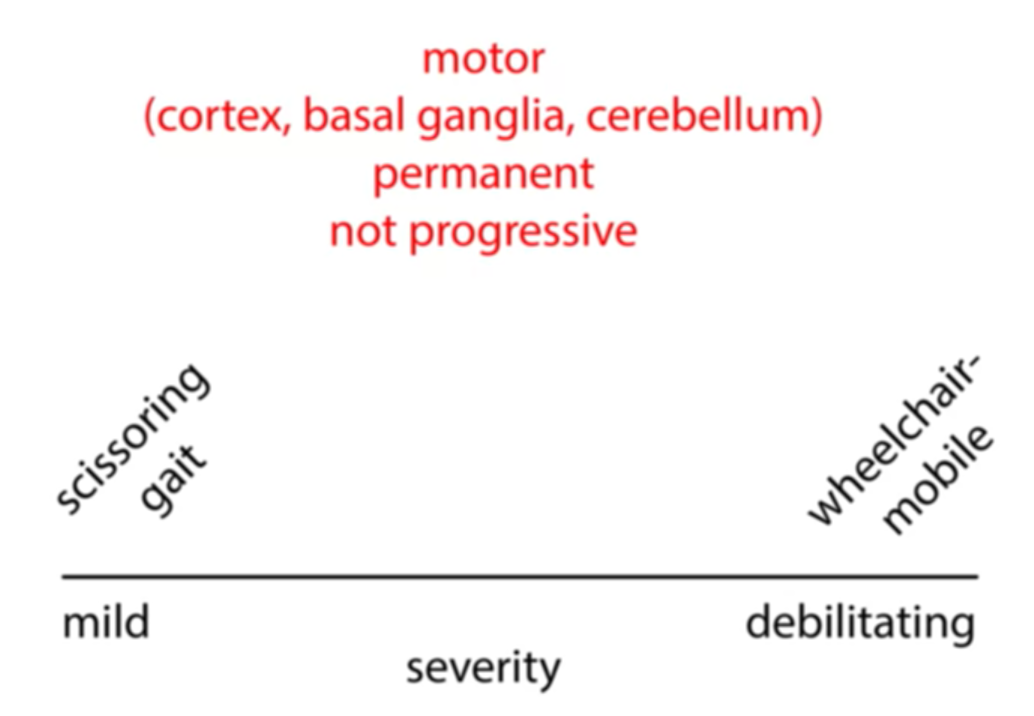Brain Development After Birth
- Brain development continues after birth, even though the basic structure is formed.
- Key processes:
- Neurogenesis (neuron generation):
- Neurons are still being generated in the telencephalon (cerebral cortex) until birth.
- Most neurons in the cerebellum are generated after birth, continuing for several years.
- Synaptic pruning :
- The brain creates a vast number of connections between neurons (exuberant connections).
- Unnecessary connections are eliminated, leaving only the most important ones.
- This process refines communication within the brain.
- Neurogenesis (neuron generation):
Synaptic Pruning and Disorders
- Abnormal synaptic pruning can contribute to neurological disorders:
- Autism: One theory suggests that autism may involve problems with synaptic pruning.
- Cerebral Palsy: Another example of a disorder potentially linked to synaptic pruning issues.
Cerebral Palsy
- Cerebral palsy (CP) is a common developmental disorder affecting motor function (roughly 2 in 1,000 children).
- It is caused by damage to the developing brain, but the damage itself doesn’t worsen over time (non-progressive).
- The impact of CP can change throughout life, but the underlying neural changes remain stable.
- CP can manifest in various forms, ranging from mild (almost undetectable) to severe (requiring a wheelchair).
- Intellectual disability is not a necessary feature of CP.
 Normal
Normal
Spastic Cerebral Palsy

- One type of CP, spastic cerebral palsy, is specifically linked to damage in the motor cortex.
- In normal development, a specific type of synaptic pruning occurs in the motor system:
- Initially, both hemispheres of the brain send signals to the same muscles.
- Through pruning, only the correct hemisphere (opposite side of the body) remains connected.
- In spastic CP, this pruning doesn’t happen properly.
- Both hemispheres continue to send signals to the muscles, leading to abnormal muscle activity and movement difficulties.
Spectrum of Severity

- CP can cause a variety of movement issues, such as:
- Scissoring gait (legs appear crossed while walking) - a common and relatively mild form.
- Despite motor challenges, people with CP can have normal intellectual abilities and live fulfilling lives.
Conclusion
- Brain development is a complex process that continues after birth.
- Synaptic pruning plays a crucial role in refining brain circuits.
- Cerebral palsy is a developmental disorder affecting motor function but doesn’t necessarily impact intelligence.
- There’s a wide spectrum of severity in CP, and people with CP can lead happy and productive lives.